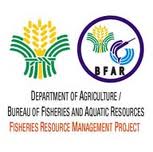Trivia about the Bureau of Fisheries and Aquatic Resources and Philippine sea foods
The Philippines is home to the world’s richest marine biodiversities, including 4900 species of marine plants and animals, 28 percent of which are economically important and 10 percent are flagship species. In fact, the country is acknowledged as the center of marine biodiversity, with many more species still being discovered. This rich resource has placed the country as one of the biggest fish producer, ranking 8th worldwide. It has been providing the Filipinos with food and livelihoods and contributing much to the improvement of the economy through exports of fishery products. For sixty years now, the Bureau of Fisheries and Aquatic Resources has been successful in striking a delicate balance between production and conservation.
 BFAR will continue to explore new frontiers to achieve its vision of a modern fisheries industry that is sustainable, technologically-advanced and globally-competitive.
BFAR will continue to explore new frontiers to achieve its vision of a modern fisheries industry that is sustainable, technologically-advanced and globally-competitive.
Diana (Lampris guttatus) – is an oceanic and apparently solitary fish that feeds on mid water fishes and invertebrates, mainly squids. This large fish is considered a good food fish and is marketed fresh and frozen or prepared as sashimi. It grows up to 2 meters and can weigh up to 270 kilos. Giant Trevally (Caranx ignobilis) – this marine pelagic fish is the largest of the species found in the Indo-Pacific region. It can grow up to 1.7 m (60 kg), but is generally caught at much smaller sizes. At maturity, giant trevally are 5 years of age and 95-96 cm length. These fish are bluish-silver on the back, sometimes with a yellowish hue. Their sides are yellowish silver. They have a small oval-shaped patch of tiny scales on the breast, right in front of the ventral fins. The giant trevally lacks any opercular spot behind the eye, and no black blotch appears at the base of the pectoral fin. The upper flanks may be covered by a scattering of small black dots. Most individuals of this species aggregate in large schools. Larger individuals tend to be solitary, and prefer to feed at night.
Skipjack tuna (Katsuwonus pelamis) – this fish is found in offshore waters and exhibits a strong tendency to school in surface waters with birds-drifting Objects, sharks and whales. They also show characteristic behaviors like jumping, feeding, foaming among other. This tuna species feeds on fishes, crustaceans, cephalopods and mollusks. Cannibalism is common. Preyed upon by large pelagic fishes, the skipjacks are taken by trolling on light tackle using plugspoons, and feathers of strip bait. This commercial fish is marketed fresh, frozen or canned; also dried-salted and smoked. Yellow fin tuna (Thunnus albacares) – this fish has a very long second dorsal fin and anal fin. Its color is black metallic dark blue changing through yellow to silver on the belly. The tuna is an oceanic species that school primarily by size, either in mono-specific or multi-species groups. It feeds on fishes, crustaceans and squids. It is sensitive to low concentrations of oxygen and therefore is not usually caught below 250 meters. It is marketed mainly frozen and canned but also fresh, smoked and as sashimi.
Cuttlefish (Sepia Cfaculeate) – this is a demersal neritic species found on sandy bottom, in lagoon or in bay of up to depth of 60 meters. This cuttlefish is characterized by 3 markings on the back, particularly by a ring of white spots at the back’s middle. Its maximum mantle length reaches to 23 cm. and weighs at 1.3 kilogram.
Bigfin reef squid (Sepiotheutis lessoniana) – this squid is abundant in Philippine waters. The skin of the cephalopod is covered with chromatophores, which enable it to mimic its surrounding. It is easily distinguished among squids for its very long fins, this species neritic specie occurring from the surface to a depth of at least 100 meters. The underside of the squid is also lighter that the topside providing additional camouflage from both prey and predator.
Sacol, green (Kappaphycus striatum) – this is the most commonly found seaweed for its carrageenan that is used in many food, pharmaceutical and industrial products. The country is recognized as the world’s top producer of semi-refined carrageenan.
Stamps, Souvenir Sheets and Official First Day Covers will be available starting July 2, 2007 at the Philatelic Service, Door 203, Liwasang Bonifacio, 1000 Manila and at all Regional Offices of the Philippine Postal Corporation.
Recent Comments